A delicious new treat is promised at The Royal Opera House for Christmas: a comic opera by Tchaikovsky that brings the wit and fun of a Russian magical folk tale to the stage in a staging of rare opulence. A story of turbulent love, magical rides through the sky with the Devil, and an impossible task - to get a peasant girl a pair of Catherine the Great's slippers - The Tsarina's Slippers has ballets and Cossack dancing as well as a host of singing characters.
Director Francesca Zambello, costume designer Tatiana Noginova and choreographer Alastair Marriott here reveal their preparations, and there is a full and exclusive gallery of the sets and costumes designs on theartsdesk here.
Director Francesca Zambello
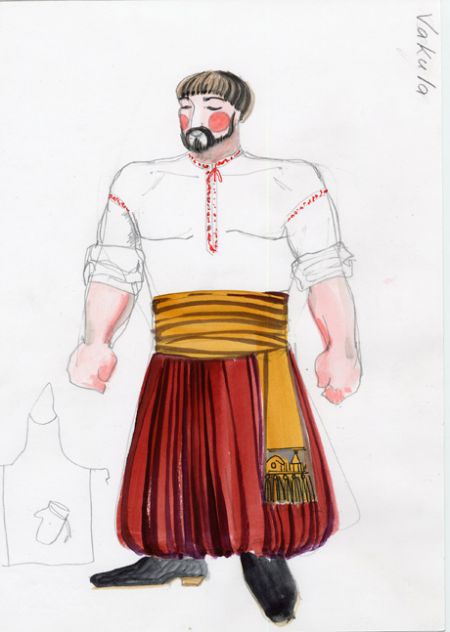 ISMENE BROWN: This is an unknown Tchaikovsky for most people.
ISMENE BROWN: This is an unknown Tchaikovsky for most people.
FRANCESCA ZAMBELLO, director: Yes, it’s a comic opera by Tchaikovsky whom you don’t immediately think of as the great comic composer. It's a piece he wrote when he was young, and it didn't do well, but he came back to and rewrote 10 years later. It is based on a Gogol short story, which is basically about a young couple - Vakula, a blacksmith (costume sketch right), whose girlfriend Oksana torments him incessantly. She says she will marry him only if he gets the Tsarina’s slippers. Which is impossible because they’re simple people. Now this is complicated by the fact that the Devil is furious with Vakula because he painted graffiti on the church, and the Devil tries to frustrate his visits to Oksana by creating snowstorms whenever he gets out of the house. The other complication is that Vakula’s mother Solokha is a witch... The Devil (costume sketch below left) courts Solokha the witch, but she ends up with Oksana’s father. So that’s the story - it’s about getting the slippers!
 How did this idea come up?
How did this idea come up?
I did this opera 15 years ago at the Wexford festival when Elaine Padmore who runs the opera here was artistic director there. it was a piece we both loved, and it did very well there. Elaine said one day we’ll do it at The Royal Opera with The Royal Ballet. How could Tchaikovsky write a piece that had so much ballet and dancing in it and we not do it here? There’s a big imperial ballet, there’s Cossack dancing, we have Royal Ballet dancers in it, children’s ballet from White Lodge, real Cossack dancers. You know, here we both are, opera and ballet in one building, and we aren't connected enough.
Anyway, the story is that Vakula goes off feeling very downhearted in the second part by a lake, where there is a big ballet of undines, and he thinks he’s going to commit suicide. And he’s about to throw himself in, and the undines are trying to pull him in, but the Devil comes along and says he’ll take him to St Petersburg to get the slippers, in exchange for his soul.
It’s a big ballet, then...
Oh, a really big ballet for the undines. And another big imperial one at St Petersburg, where there is a very large statue of Catherine the Great. The ballet appears from underneath Catherine the Great’s skirts. Also our desire here was to offer something that you might bring your family to, make ballet-lovers come to an opera, opera-lovers enjoy ballet. And it’s a Christmas piece - we don’t want to take away from The Nutcracker, but to enhance it and complement it.
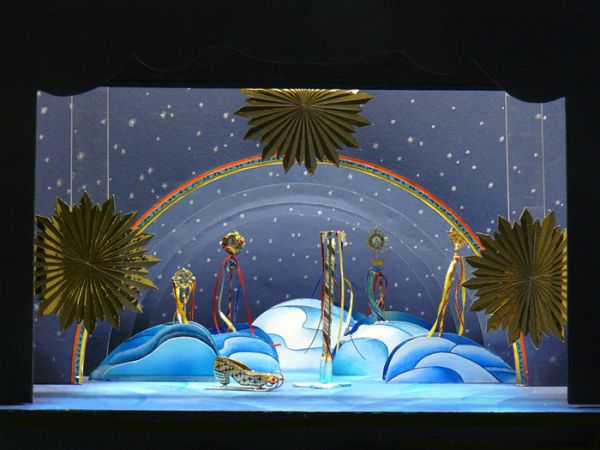 How did you decide on its "look"?
How did you decide on its "look"?
I wanted a very naive, folkloric feel to the piece. It takes place in this fantastical village world. We wanted to keep it light - look around the proscenium you see it’s a border of little shoes. There’s a lot of foot activity in this opera. I went with two Russian designers - I’d worked with the costume designer before, Tatiana Noginova, at the Bolshoi. For the set I wanted someone who could paint in a naive style, and chose Mikhail Mokrov.
Does Gogol give any visual clues in his story?
No. Actually normally Gogol’s stories have a kind of political or sardonic bent - I directed The Nose, Shostakovich's opera based on one of his stories, and The Inspector General, but they’re a very different flavour from this one, which is a very naive story. And it’s very interesting because Tchaikovsky hardly ever wrote about ordinary people. In this opera these are simple peasants (costume sketch left), whereas his operas are almost always set on aristocratic characters, apart from a few characters at the beginning of Eugene Onegin. So I think this is a piece he wrote when he was young, and it didn’t do well, and he rewrote it 10 years later.
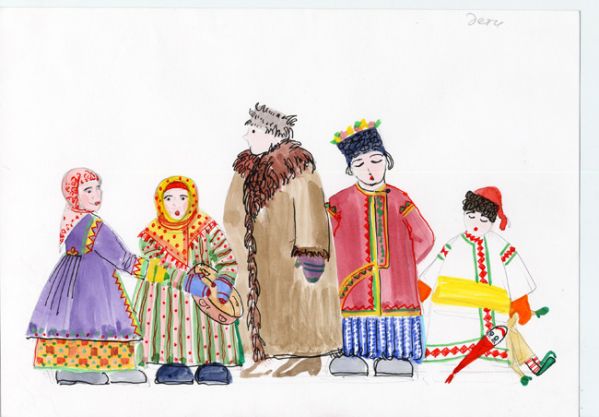 When you’re directing something in this style, as opposed to Turandot, does it need the individual singers to have a special movement style?
When you’re directing something in this style, as opposed to Turandot, does it need the individual singers to have a special movement style?
This stylistically is very naturalistic for the humans, but with the Devil and his secondary devils, we took something very movement-based, active and physical. Solokha goes between the two worlds, functioning in both human and supernatural way - Larissa Diadkova is doing it, it’s a real character mezzo part. And there’s a nice star turn from Sergei Leiferkus in the cast. He plays Potemkin who is gracious enough to give Vakula the slippers to take back to Oksana.
All the principal singers and the conductor are from Russia - why did you do that?
I know most of them - I’ve directed most of them at the Bolshoi, and I’ve directed many Russian operas. I knew everyone in the cast, and Elaine knew a lot of them. Of course, now in the polyglot world of opera everyone does everything but this kind of piece, with this Russian naive character, I felt needed Russians. It’s like doing Peter Grimes, it makes a difference to have an all-English cast. These people have an immediate understanding of Gogol. They get the fact that it’s wild and crazy, not silly, but a comedic value that’s different. If Tchaikovsky had written it for an English audience you’d call it panto. It’s a fun world.
You’ve directed a very big range of operas here, from big Italians to modern English and so on.
I made my debut here I think in 1993, with a new opera by Alexander Goehr, Arianna. Then I’ve done a lot since here - Mozart, Smetana, Bizet, Britten, Russian etc. My whole family was involved in arts, it was all part of growing up. I was lucky enough to hook up with Jean-Pierre Ponnelle as his assistant for several years, and ran my own little theatre company in Milwaukee for seven years, where I produced and directed eight or nine shows a year, operas, musicals, revues, Gilbert and Sullivan.
What’s more interesting about opera production than theatre or ballet?
They’re all challenging and interesting in their own way. But music gives you a river, a map, a different kind of bible from words - you respond to things in a more visceral fashion. And I think music allows a greater visual freedom. It interests me to have different collaborators. It’s frustrating, I meet young actors who only go to plays, I say, why not go to opera and ballet? We’re all part of the same ocean.
Costume designer Tatiana Noginova
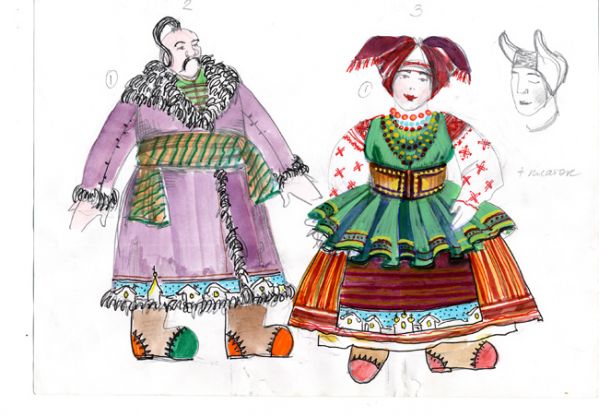 TATIANA NOGINOVA: I'm trying to create here a fairytale, a magical world that surrounds our life in Russia. And I’ve done a lot of research - these are Ukrainian costumes. Russian female peasants would wear a dress and blouse - Ukrainian women wear skirts with two pieces, simple squares front and back covering an underskirt with a border. They would also wear a long blouse.
TATIANA NOGINOVA: I'm trying to create here a fairytale, a magical world that surrounds our life in Russia. And I’ve done a lot of research - these are Ukrainian costumes. Russian female peasants would wear a dress and blouse - Ukrainian women wear skirts with two pieces, simple squares front and back covering an underskirt with a border. They would also wear a long blouse.
Those sleeves are fantastically embroidered. And these hems too.
You know about pieces in Russian and Ukrainian costumes? Through the winter, women would embroider these fantastic pieces, because they had a lot of time. They would do collars, sleeves and hems in separate, detachable pieces. So if you got a hole in the chemise you would move the sleeves to a new one. And the more beautiful your stitching, the better a wife you would be! It was a kind of test. A husband would look for his future wife this way - he would give her this very complicated knot of thread, and he would watch her fingers, how she unravelled it. With passion, or with calm, or patience - this would give him an idea how she would be in family life!
And in the court, too, the Russian courtiers had a tradition of folkloric performances, and would wear what they called folk dress for special occasions.
You can't leave dirty costumes overnight. In the Mariinsky our dry-cleaning machine is broken so we dab the stains with vodka
Each of these costumes you make in several versions?
Yes, these costumes aren’t actually such fragile ones in this show. This coat has a lot of extra pleating in its sides, because historically the coat would be made for many generations and many sizes would wear it, so you made it with extra material to let it out if necessary. This courtier’s coat has a marvellous printed border here of St Petersburg. Printed specially here at The Royal Opera House from this set design. We couldn't afford to have it made up in brocade, but our magic Jack said let’s print it! This pattern is printed on those coats. What’s very good about Covent Garden is that everything is inside the building. You don’t have to go outside. This is good for fittings, and though we did make some costumes outside the house, all the preparation work, like dying and printing, the trimmings, are made here.
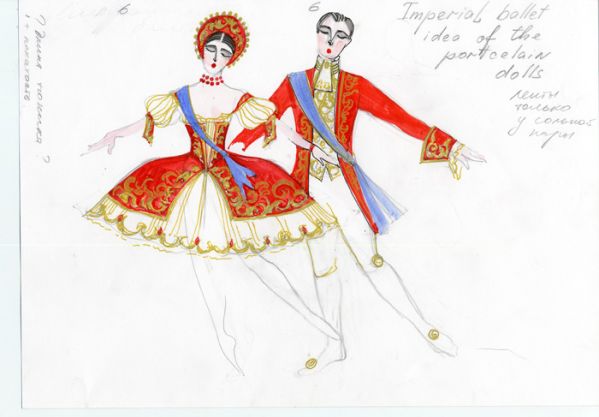 And what about materials?
And what about materials?
In Russia if you need to create some very old-looking fabric there’s no way you can buy it, you need to make it. Like threading yarns through net or something. But here we have found a lot of beautiful fabrics that look old already. We have a lot of catalogues in a magic room here, where textile manufacturers send in books of samples of fabrics they make specifically for theatre. You just sift through and choose what you need. You are mostly looking for historic-looking brocades or something. A few people might use something as rich as this for a curtain, in a palace somewhere, but nobody would wear this kind of felt fabric that is mostly for uniforms.
Can any of them be washed?
You can usually wash the materials and before you sew them you should wash them, because they might shrink later.
What about the costumes? Every night after the show there’s a big wash?
Yes, after each show we do a lot of washing of T-shirts, underwear, tights, in gigantic machines. And if somebody is very sweaty and he has marked a very nice coat, we have to do special steaming, removing of spots under the arms. The heaviest costume in this show is the Devil’s. He has a lot of layers, and hair coming out of his chest which is very hot. But we get a through-draft across the stage.
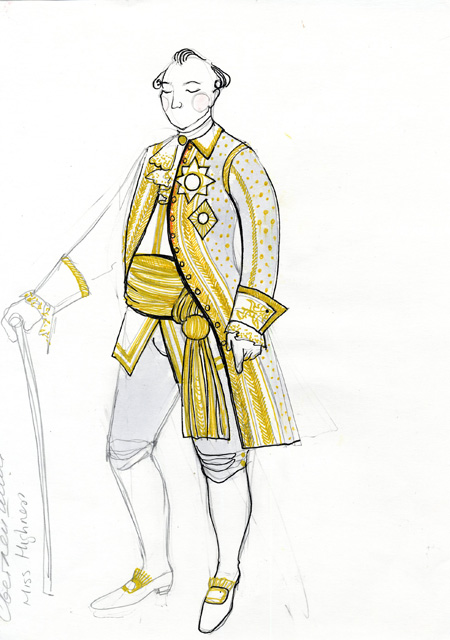 I suppose sweat is very destructive on costumes.
I suppose sweat is very destructive on costumes.
Yes, you’re right. And the smell! Nobody keeps dirty costumes - they’re washed or dry-cleaned. In the Mariinsky our dry-cleaning machine is broken so we use some soft fabric with vodka, and dab the stains. If you want to keep costumes for long life you must do them immediately. If there are two shows in a day, people must switch underwear.
I would imagine that polyester fabrics now give more durability and colour, but also cause more sweating.
Yes, cotton and silk can be wrinkly, and polyester looks better on the body. It also keeps colour better. Though some people do have allergies to polyester, and others have allergies to wool, so people always have cotton underneath.
Do you get specific amounts of fabric and trimmings made up for you?
Yes, we just add up the amount we’ll need and order it. Here it comes back in two days. It’s a pleasure to work here at Covent Garden because everything is so fast. It would be much more difficult in Russia to build a show like this. At some point you’d just get so tired, because you’re always having to change ideas because you can’t find the fabric. Believe me, it’s wonderful here.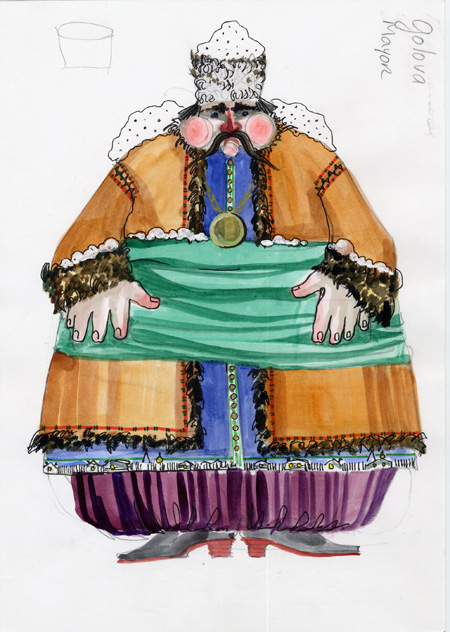
Do you find out what the performer looks like before you do a costume drawing?
Yes, usually I get a photograph sent to me. For this show, though, I think Francesca was looking for big people, big like the Ukrainians are in the countryside, healthy, tall, strong. So that’s why I made a drawing before she chose people. We have a lot of shoulder pads - some of them are not fat enough so we have to pad them out. For example, the Mayor should be a big person, yes? (costume sketch left)
Your colour schemes here are very bright, primary, almost like Bakst colours for Diaghilev, and very graphic shapes.
It is very folkloric. They never matched the colours - they didn’t say, this is yellow so I will use a soft brown with it. It would be anything they could buy. The costume should be very bright. In Russia the weather is always sad, there is no such thing as beautiful autumn or spring sun, and the only thing with which you can bring joy into life is costume. Costume would decorate our lives. Not now, when everyone is wearing Armani in black or grey...
Choreographer Alastair Marriott
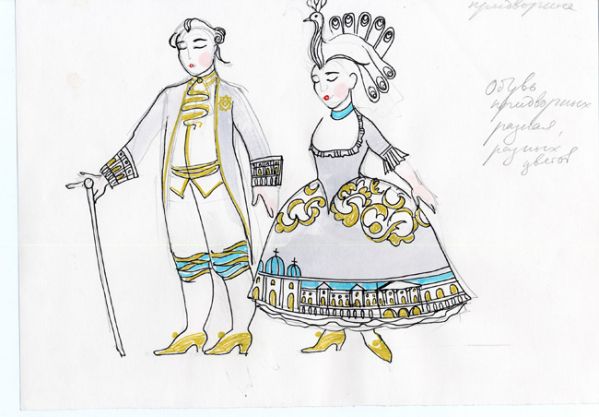 ALASTAIR MARRIOTT: You can’t help but be affected by Tatiana's costumes, especially when they wore them at the first stage call. We were going, how beautiful... Everything is decorated almost as if you were in Paris when Diaghilev has arrived. Every costume is totally individual, and the colours are just amazing. Nobody uses colour like that now. Some of the materials are still, but when they do the polonaise in a way it helps them feel the period, how you’d be moving with a great skirt or a thing on your head. Also you had more space around you then. People lived in bigger spaces, they had more room, so you would have a big dress or coat, and people were used to more distance, they didn’t clump together. That does affect your choreography and how you make people move.
ALASTAIR MARRIOTT: You can’t help but be affected by Tatiana's costumes, especially when they wore them at the first stage call. We were going, how beautiful... Everything is decorated almost as if you were in Paris when Diaghilev has arrived. Every costume is totally individual, and the colours are just amazing. Nobody uses colour like that now. Some of the materials are still, but when they do the polonaise in a way it helps them feel the period, how you’d be moving with a great skirt or a thing on your head. Also you had more space around you then. People lived in bigger spaces, they had more room, so you would have a big dress or coat, and people were used to more distance, they didn’t clump together. That does affect your choreography and how you make people move.
Is is strange choreographing singers?
I love the cast’s personalities. They don’t seem to mind that I’m English while they’re all Russian. They’re all really brave about trying a new thing. From my point of view, if they’re moving while they’re hitting an important note with the conductor, they have to be able to see him - that’s the kind of thing you really have to rehearse carefully, otherwise the singer won’t be with the conductor.
 You have two big ballet numbers for The Royal Ballet, and a lot of other dancing, don’t you?
You have two big ballet numbers for The Royal Ballet, and a lot of other dancing, don’t you?
Quite a few actually. There are two classical numbers for The Royal Ballet, one fantasy lake scene, and then a St Petersburg scene, a Petipa-type number, but I also have made a Cossack number as part of the St Petersburg scene. And we made a couple of numbers for the chorus, a polonaise and a minuet. And then everybody in the production has to move and dance - so there’s one number with 80 people or something.
Then there’s the staging or movement choreography, like when the witch is on her broomstick singing with the devil, little numbers where she jumps on the broomstick and he jumps on the tail. And a lot of movement-based acting. A lot of these people are actors, not dancers.
Real Cossack dancing is very like breakdancing, actually. It’s exciting to see it against tutu ballet, a much bigger contrast than you expect
The Petipa number of course is right up my street, because it’s where the Tchaikovsky opera and ballet meet. I know those types of ballets, that period, and then you put your kind of voice on it to make it interesting. But luckily I got to study a Ukrainian DVD that someone found in an Israeli airport - of Soviet-era Ukrainian dancing. I wanted to get the right arms, the right authentic flavour. This isn’t a take on what we think Russian or Ukrainian is - these are actual Russian designers who’ve produced this very beautifully made world on stage, and it’s only possible because they are the real thing. 
Also in the nymph scene originally people in the ballet costume department wanted to strip the costumes down and make them more “ballet”, with leotards. But then we discussed it more, and felt these nymphs had to have scaly legs, they have to fit the characters, and they have sort of gold carps on their heads (see costume sketch). So all this is very inspiring.
What’s your choreographic process here?
The thing is to produce a really happy, exciting experience. It’s like doing a posh musical, really tiring, and there are constant changes - and you have to be able to choreograph fast. Sometimes my job is just to provide a button at the end of a number, like in a musical. Sometimes you’ll get an aria after a big ensemble and suddenly there’s a big open space. And Francesca will say, this stage looks empty - I need you to make something here.
Is it possible to stage the opera without such a large dance element?
Yes, you could, but Francesca said she’s worked on it in a small scale before, without the budget and corps de ballet to call on, and it’s really lovely to be able to put those in and make the whole thing richer. So that when you say, here’s a St Petersburg Imperial entertainment, you can actually show what it might look like.
And you have done a real Cossack dance (see costume sketch).
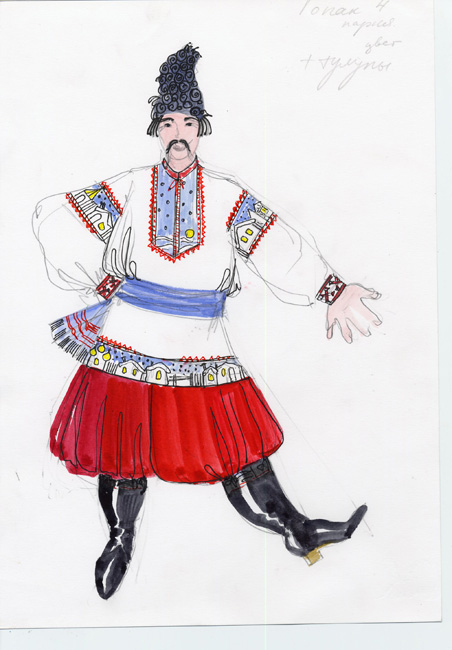 Ballet dancers hate doing Cossack stuff because they get bad knees, and also they can’t do the types of tricks Cossack dancers are trained for. We auditioned originally thinking we’d do a kind of Trepak, but once we got real Cossack dancers in we saw that a Trepak is actually quite “ballet”, and also each Cossack dancer has their own trick that they do. So I got them to show their tricks and then organised them with the music to build to the right button.
Ballet dancers hate doing Cossack stuff because they get bad knees, and also they can’t do the types of tricks Cossack dancers are trained for. We auditioned originally thinking we’d do a kind of Trepak, but once we got real Cossack dancers in we saw that a Trepak is actually quite “ballet”, and also each Cossack dancer has their own trick that they do. So I got them to show their tricks and then organised them with the music to build to the right button.
Quite a few of the auditionees were from Nottingham! Strange - I don’t know why but it may be some network. Most of them English, actually, and much younger than I expected, 16, 17, 18. We only had one Russian, who disappeared. It’s very like breakdancing, actually. It’s exciting to see it against a tutu dance, a much bigger contrast than you expect. The Cossacks were a real help in the ballet too. They’d show me certain arms that are more Russian than we’re used to - often in ballet you do something you think is Russian, but is probably Hungarian. As I think this may be a joint production with the Bolshoi I didn’t want people over there to say, ooh this isn’t Russian.
- A full gallery of costume and set designs by Tatiana Noginova and Mikhail Mokrov can be seen here.
- The Tsarina's Slippers opens on Friday 20 November at The Royal Opera House, with performances until 8 December. Book online here.

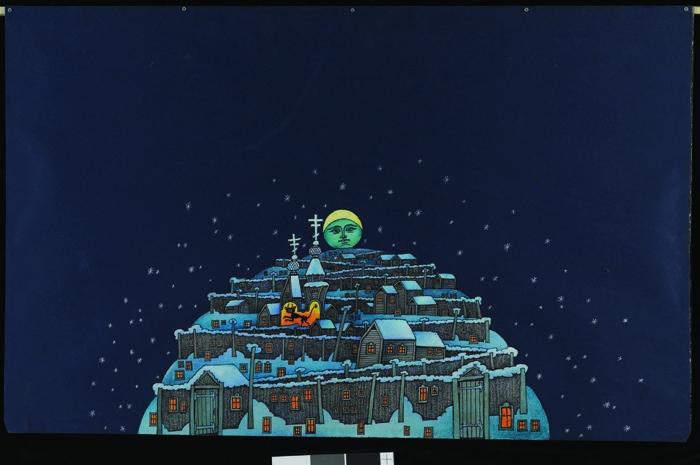

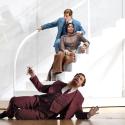






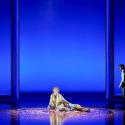

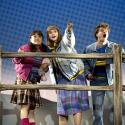
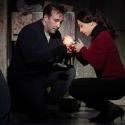
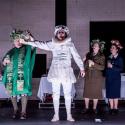
Add comment